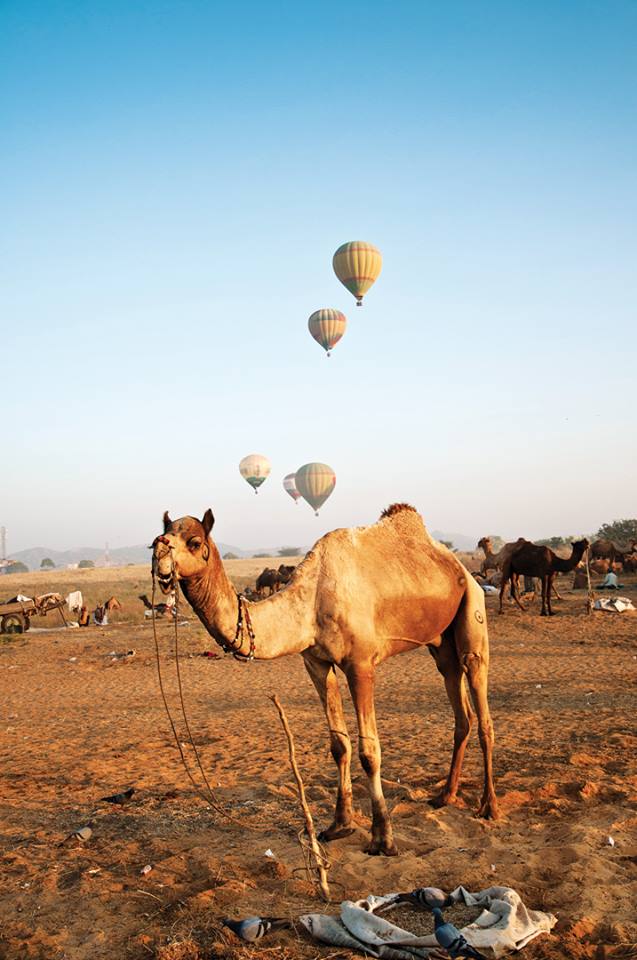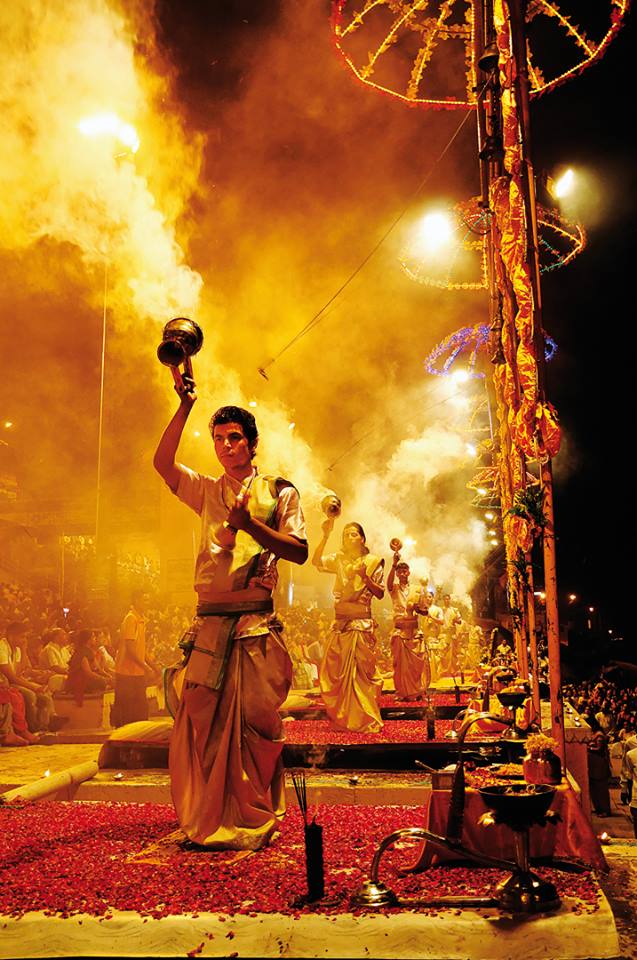PUSHKAR FAIR
Camel camaraderie
Come November and the highway to Pushkar encounters a traffic jam of a unique kind. Two out of its eight lanes are jampacked with camels. The destination? The Pushkar Fair. The Pushkar Cattle Fair is undoubtedly one of the largest in India with livestock trading spread almost over 10 days. More interestingly, the fair also involves a fair share of religious tourism as devotees take a dip in the holy lake at Pushkar to seek salvation from their sins.
Throughout the fair a mood of merriment prevails with acrobats, rural artists, folk singers and dancers holding the show. While on one hand camels are being judged on their might and beauty, on the other horses are being raced by their masters. A cacophony dominates the air – of buyers bargaining over the cattle price, of people placing bets for the horse race, of crowds cheering, of sellers drawing attention to their goods. There is yet another reason that makes the Pushkar Fair this year a ‘must watch’ – the Pushkar Lake, after a recent bout of heavy rain, has come back to life. Few people know that it is on these very banks that the only temple in India dedicated to Lord Brahma is located.
JAGADHATRI PUJA, CHANDANNAGAR
Invoking the bearer of the world
Jagadhatri Puja in Chandannagar, the erstwhile French colony in West Bengal, is as well known as the Durga Puja in Kolkata and is celebrated with as much fervour. In fact, there’s more zing to it. Chandannagar, compared to Kolkata, is a very small town, and the population at this time of the year, even by conservative estimates, triples in size. So, there are a lot of welldressed, cheerful people in a celebratory mood literally everywhere. Every lane hosts a pandal…it’s like being at a party which the entire town is a part of!
The lighting arrangements done around the town during the puja is as much a treat to watch. Huge, 3D canvases made of light bulbs bring to life scenes from the circus, country side, mythology, sports etc. There’s something new to look forward to each year because the lighting artists draw inspiration from current affairs to create the themes. Today, the small town of Chandannagar alone hosts over 120 community pujas, most of them affiliated to the Chandannagar Central Jagadhatri Puja Committee. The magnificently ornamented idol of Goddess Jagadhatri (the name means ‘bearer of the world’), holding a conch, a chakra, a bow and an arrow in her four hands, is awe-inspiring, to say the least. Riding on a lion that’s seated atop the elephant demon, the Goddess adorns a snake around her slender neck. Jagadhatri is considered to be another form of Durga. In fact, while Durga appears in the Shukla Navami of the Bengali month of Ashwin as a 10-handed Goddess, on the same day, in the month of Karthik, she arrives as the four-handed mother of the universe.
GANGA MAHOTSAV, VARANASI
The river song
A dip in the Ganga in Varanasi at the break of dawn, on the day of Kartik Purnima, is believed to bring salvation. Most pilgrims gather along the ghats while tourists take the boats to the middle of the river to get a grand view of this spectacle. Gangaa Mahotsav, a cultural festival is also organised during this time. While the stairs of Rajendra Ghat double up as as galleries, the quadrangle overlooking the river becomes the stage.
Leading artists from across the country perform at night and during the day, traditional sports like wrestling and malkhamb take centrestage. The evening of Kartik Purnima is devoted to Dev Deepavali when thousands of lamps are lit to welcome the gods. Huge wheels fixed on the façade of the buildings adjoining the river bank are also set on fire, creating a phantasmagoria of colours. Priests holding huge lamps perform the Ganga-aarti and chant hymns in honour of the gods and the river. Thousands of devotees gather on the river banks to make their offerings to the river – a small lamp and a few flowers folded in a leaf.
By Supreet Cheema
About the author
Supreet loves to travel and getting into the skin of the destination. Active on travel forums, she likes to read and dance in her free time.






